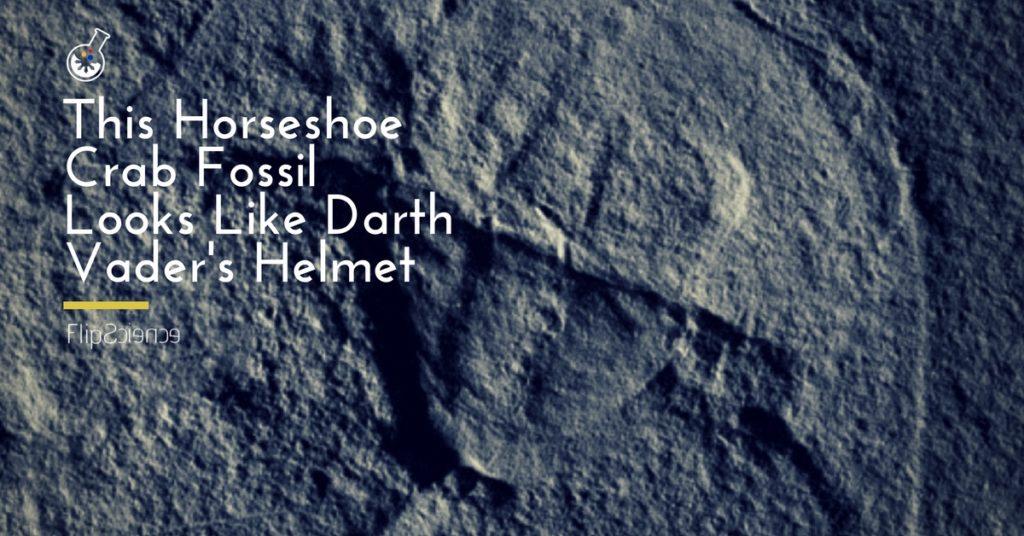Think horseshoe crabs are nothing more than boring, cockroach-like critters? If Vaderlimulus tricki were alive today, it would definitely find your lack of faith disturbing.
Paleontologists gave this 245-million-year-old fossil horseshoe crab its undeniably awesome name due to its resemblance to the helmet of the iconic cinematic villain Darth Vader.
The research-team-slash-Star-Wars-fans behind this discovery are Allan J. Lerner and Spencer G. Lucas from the New Mexico Museum of Natural History and Science in Albuquerque, and Martin Lockley from the University of Colorado at Denver. The researchers’ findings first appeared in the German journal Neues Jahrbuch für Geologie und Paläontologie, the world’s oldest paleontological journal.
“No, I am NOT your father”
Discovered in Idaho, Vaderlimulus is the first North American fossil horseshoe crab dating back to the Triassic Period. The Triassic kicked off the Mesozoic Era, the epoch in which dinosaurs dominated the Earth.
Vaderlimulus belongs to an early and significant period in the development of Earth’s fauna. However, the evolutionary history of horseshoe crabs goes far beyond that. In fact, the fossil record pins their first appearance at 470 million years ago, at the very least.
Genetically, horseshoe crabs are closer to arachnids (such as spiders and scorpions) than their crustacean namesakes. Horseshoe crabs have barely changed in appearance over millions of years; thus, they are often called ‘living fossils.’
According to Lerner, Vaderlimulus has “unusual body proportions.” This made the team classify Vaderlimulus under the now-extinct Austrolimulidae, a family of horseshoe crabs that grew accustomed to freshwater settings in the Triassic. Austromulidae had physical characteristics that set them apart from today’s typical horseshoe crabs, much like Vaderlimulus.
Horseshoe crabs in the Philippines
Two out of the four horseshoe crab species still in existence, the Mangrove horseshoe crab (Carcinoscorpius rotundicauda) and the Japanese horseshoe crab (Tachypleus tridentatus), can be found in the Philippines. Many vacationers in Palawan take pictures of these fascinating creatures, which they typically find near the shorelines.
Horseshoe crabs play a vital role in biodiversity conservation. Their blue, copper-based blood is also highly valued for its medicinal properties. Unfortunately, their numbers are dwindling, partly due to human activities affecting their breeding grounds. In fact, at least one species (Limulus polyphemus) is classified as “near threatened” by Endangered Species International.

Author: Mikael Angelo Francisco
Bitten by the science writing bug, Mikael has years of writing and editorial experience under his belt. As the editor-in-chief of FlipScience, Mikael has sworn to help make science more fun and interesting for geeky readers and casual audiences alike.







